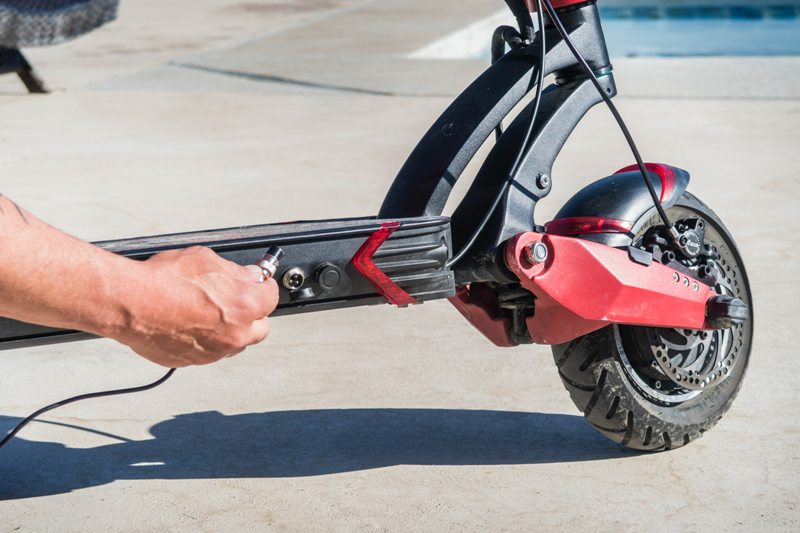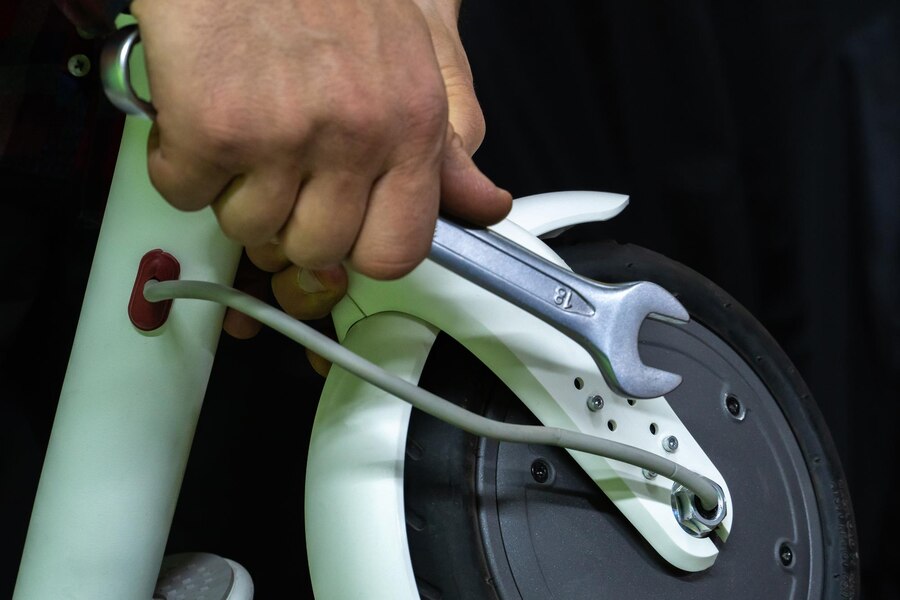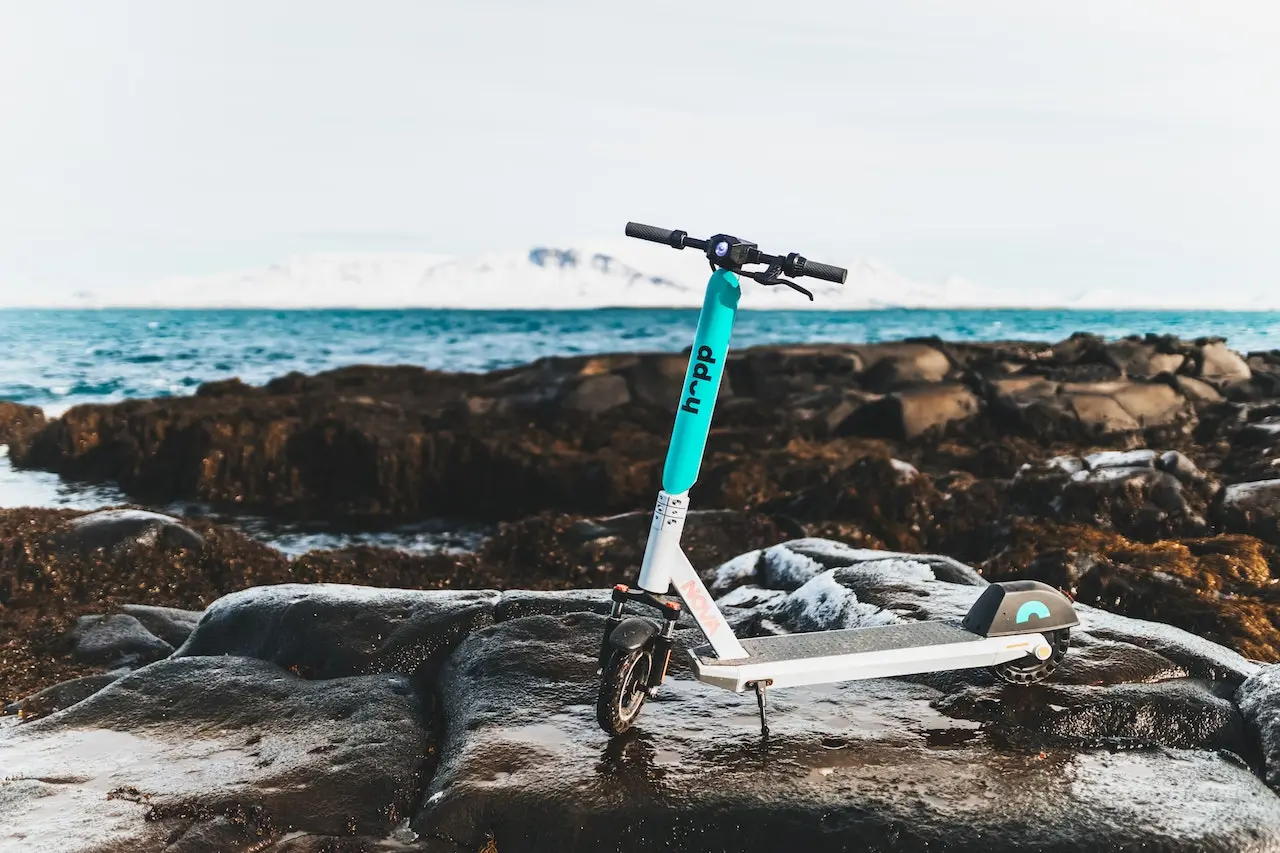If you’ve accidentally ridden your electric scooter through a puddle or left it out in the rain, you may be wondering how to fix the water damage. Water and electricity don’t mix, so it’s important to address this issue as soon as possible to avoid damaging your scooter further or even causing a safety hazard.
It is important to fix electric scooter water damage because it can affect the safety of the rider and other people on the road. Malfunctions or failures can cause accidents and injuries, and may also result in costly repairs or replacement of the scooter.
This article will cover the following key points related to electric scooter water damage:
What Causes Electric Scooter Water Damage
Electric scooter water damage can be caused by a variety of factors, including:
- Rain and Splashes: Riding an electric scooter in the rain or through puddles can cause water to penetrate the electrical components of the scooter.
- Submersion: If an electric scooter falls into a body of water or is submerged, it can cause significant water damage to the electrical components.
- Humidity: Exposure to high humidity levels can cause moisture to build up inside the electrical components, leading to corrosion and damage.
- Improper Cleaning: Using too much water or cleaning products that are not recommended for use on electric scooters can also cause water damage.
- Manufacturing Defects: Sometimes electric scooters can have manufacturing defects that make them more prone to water damage, such as poor quality seals or insufficient waterproofing.
Signs of Water Damage in Electric Scooters
Here are some common signs of water damage in electric scooters:

- Loss of power: Water damage can cause the scooter’s battery to malfunction, resulting in a loss of power or shorter battery life.
- Strange noises: If you hear unusual sounds coming from your electric scooter, such as grinding, whirring, or clicking, it could be a sign that water has penetrated the motor or other electrical components.
- Malfunctioning lights: Water damage can also cause the lights on the electric scooter to flicker, dim, or fail to turn on at all.
- Rust or corrosion: If you notice any rust or corrosion on the electrical components or other parts of the scooter, it could be a sign that water has caused damage.
- Unresponsive controls: If the throttle, brakes, or other controls on your electric scooter are unresponsive or slow to respond, it could be a sign of water damage.
Steps to Fix Electric Scooter Water Damage
If you have experienced water damage to your electric scooter, it is important to fix it promptly.
Here is a step-by-step guide on how to fix electric scooter water damage.
Step 1: Disassemble the Electric Scooter
The first step in fixing electric scooter water damage is to disassemble the scooter. This will allow you to assess the damage and determine which parts need to be repaired or replaced.
To disassemble the electric scooter, you will need the following tools:
- Screwdrivers (flathead and Phillips head)
- Allen wrenches
- Pliers
- Wire cutters
It is important to keep track of the screws and other small parts you remove during disassembly, as they will need to be reassembled later.
Step 2: Inspect the Battery and Motor
Once the electric scooter has been disassembled, the next step is to inspect the battery and motor for signs of water damage. Look for the following signs of damage:
- Rust or corrosion
- Water stains or residue
- Burnt or discolored wires
Check the connectors, wires, and other electrical components for signs of damage as well. If you notice any damage, you will need to repair or replace the affected parts.
Step 3: Dry Out the Electric Scooter
After inspecting the battery and motor, the next step is to dry out the electric scooter. There are several ways to dry out an electric scooter, including:
- Using a hairdryer on the lowest setting to blow air over the electrical components
- Placing the electric scooter in a warm, dry place for several hours
- Using silica gel packets to absorb moisture
It is important to avoid using a high-temperature setting on the hairdryer, as this can cause further damage to the electrical components.
Additionally, make sure to remove the battery before drying out the electric scooter.
Step 4: Clean the Electric Scooter
Once the electric scooter has been dried out, the next step is to clean it. Use a soft cloth to wipe down the exterior of the scooter, and a toothbrush or small brush to clean the electrical components.
You may also want to use a mild cleaning solution to remove any dirt or grime that has accumulated on the scooter.
Step 5: Replace Damaged Parts
If you identified any damaged parts during the inspection, the next step is to replace them. Common parts that may need to be replaced include the battery, motor, and electrical connectors.

Be sure to use replacement parts that are compatible with your electric scooter’s make and model.
Step 6: Reassemble the Electric Scooter
Once you have replaced any damaged parts, the final step is to reassemble the electric scooter.
Use the screws and other small parts you kept track of during disassembly to put the scooter back together. Make sure to tighten all screws and connectors securely
Prevention and Maintenance
Preventing water damage to your electric scooter is the best way to avoid costly repairs and keep your scooter in good working condition.
How to Prevent Electric Scooter form Rain?
Here are some tips on how to prevent water damage:
1. Avoid riding your electric scooter in wet conditions
Water can seep into the electrical components of the scooter, causing damage to the battery, motor, and other parts.
2. Store your electric scooter in a dry place when not in use
Moisture from rain, snow, or humidity can cause damage to the scooter’s electrical components over time.
3. Use a protective cover for your electric scooter
A cover will help protect your scooter from rain, snow, and other elements that can cause water damage.
4. Regularly inspect your electric scooter for signs of wear and tear
Check the electrical components, connectors, and wires for signs of damage or corrosion. If you notice any damage, have it repaired promptly to prevent further damage?
5. Keep your electric scooter clean and dry.
Use a soft cloth to wipe down the exterior of the scooter and a toothbrush or small brush to clean the electrical components. Make sure to dry the scooter thoroughly after cleaning.
How to Maintain Electric Scooter form Rain?
In addition to preventing water damage, regular maintenance of your electric scooter can also help prevent future water damage.
Here are some tips on how to maintain your electric scooter:
1.Keep the battery charged
A fully charged battery will help prevent damage to the battery cells, which can occur if the battery is left unused for long periods.
2. Check the tire pressure regularly
Proper tire pressure will help prevent damage to the tires, which can lead to water damage if the tires become punctured or worn down.
3. Lubricate the scooter’s moving parts
Regular lubrication of the scooter’s moving parts will help prevent wear and tear, which can lead to water damage if the parts become damaged.
4. Store your electric scooter in a dry place when not in use
Moisture from rain, snow, or humidity can cause damage to the scooter’s electrical components over time.
5. Follow the manufacturer’s recommended maintenance schedule
Regular maintenance of your electric scooter will help ensure that it stays in good working condition and prevent future water damage.
Conclusion
Electric scooter water damage can cause a lot of problems, from loss of power to malfunctioning lights and strange noises. To fix water damage to an electric scooter, you need to disassemble the scooter, inspect the battery and motor, dry out the scooter, clean it, replace any damaged parts, and reassemble it.
It’s important to take preventative measures to avoid water damage, such as avoiding riding in wet conditions, using a protective cover, regularly inspecting your scooter for wear and tear, and keeping your scooter clean and dry.By following these steps, you can keep your electric scooter in good condition and ready to ride.
About the Author

Seba K
Hi, I m Seba and I am the author of this blog.
Electric scooters have been my passion since I bought my first one back in 2016.
Since then, I have experimented with numerous models and gained a wealth of knowledge about electric scooters.
I always keep myself updated with the latest product releases and advancements in this field.
I am delighted to share my experiences and insights with you here.
My background includes a degree in Avia Engineering, and I have a keen interest in outdoor sports and traveling.




